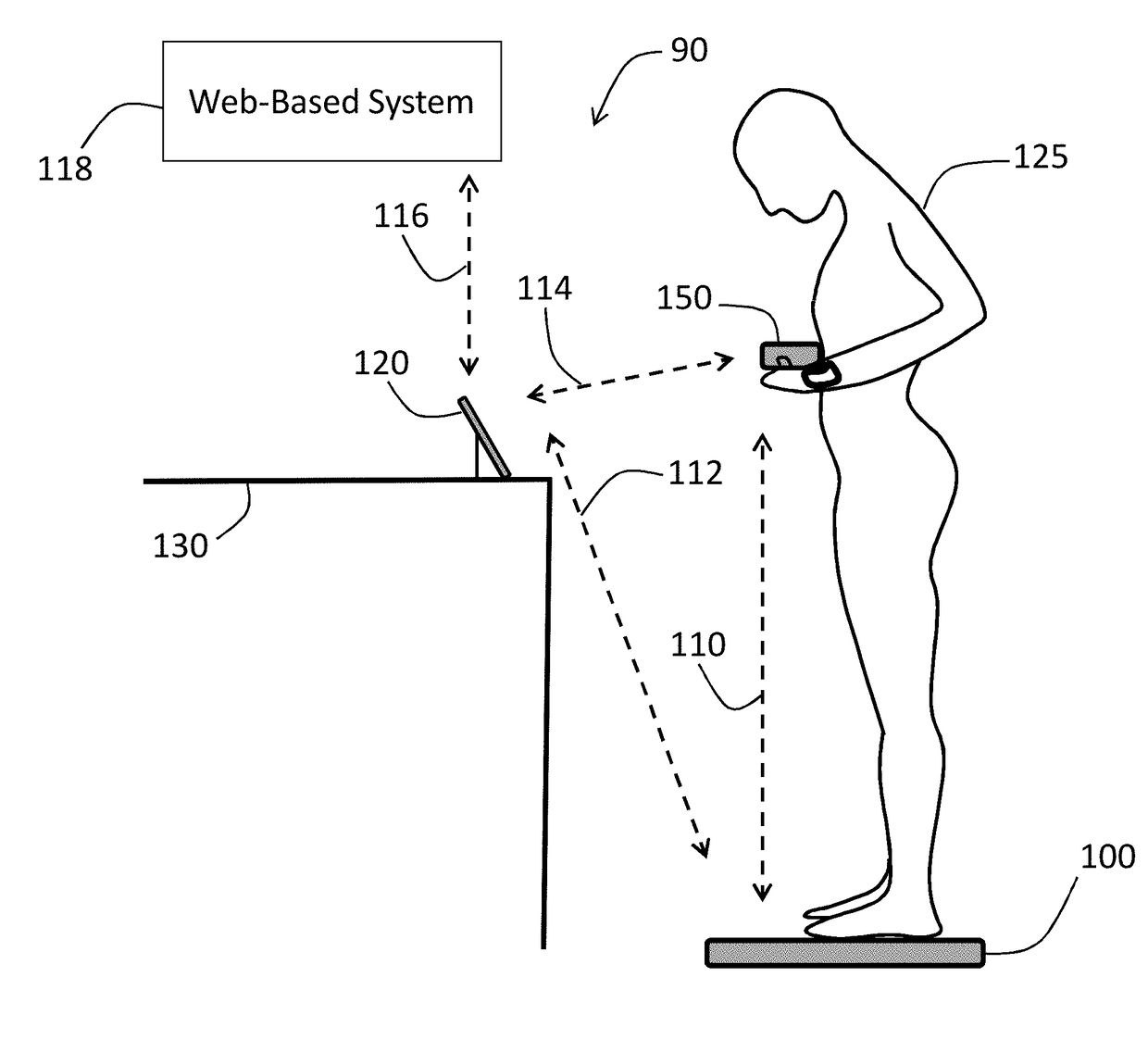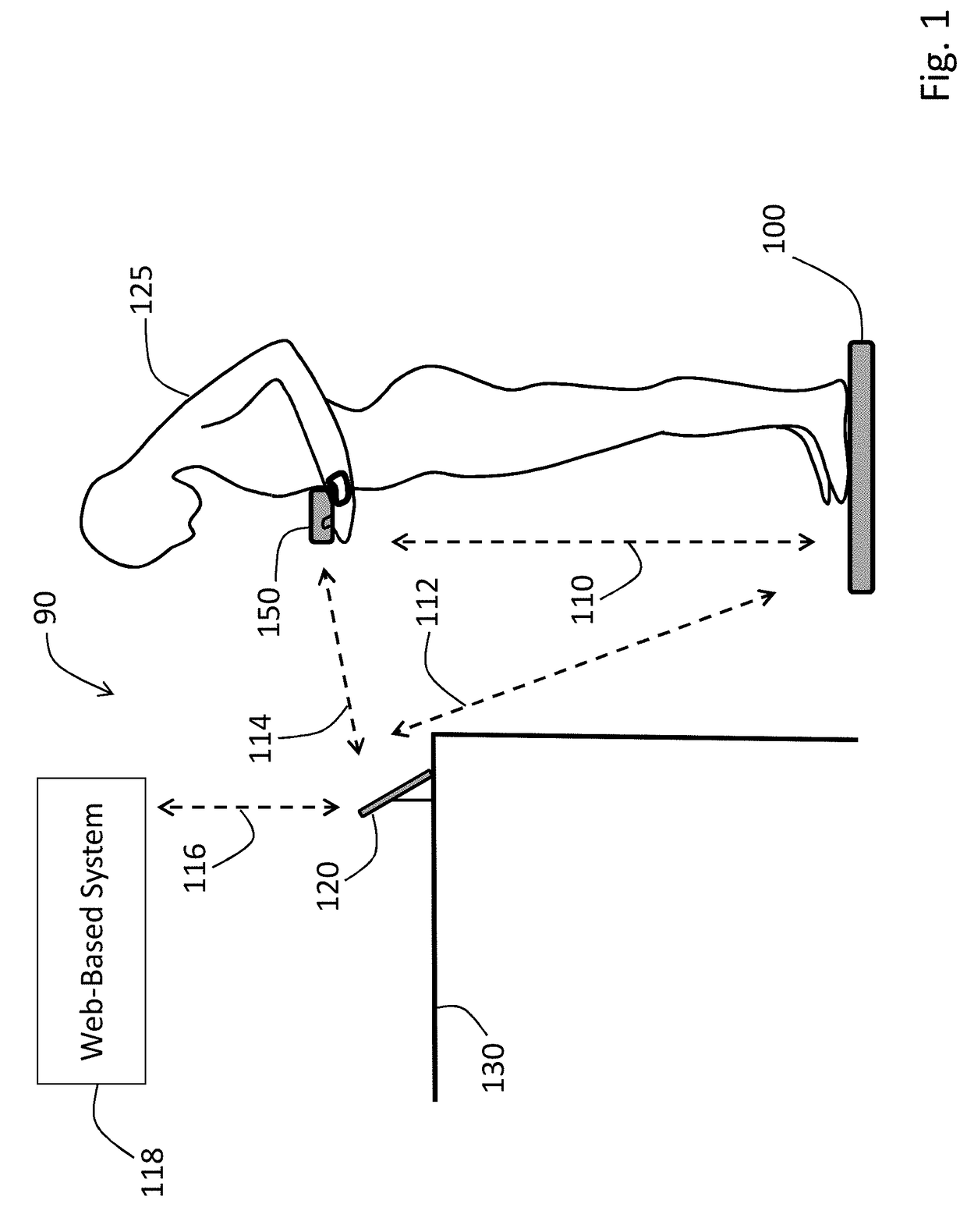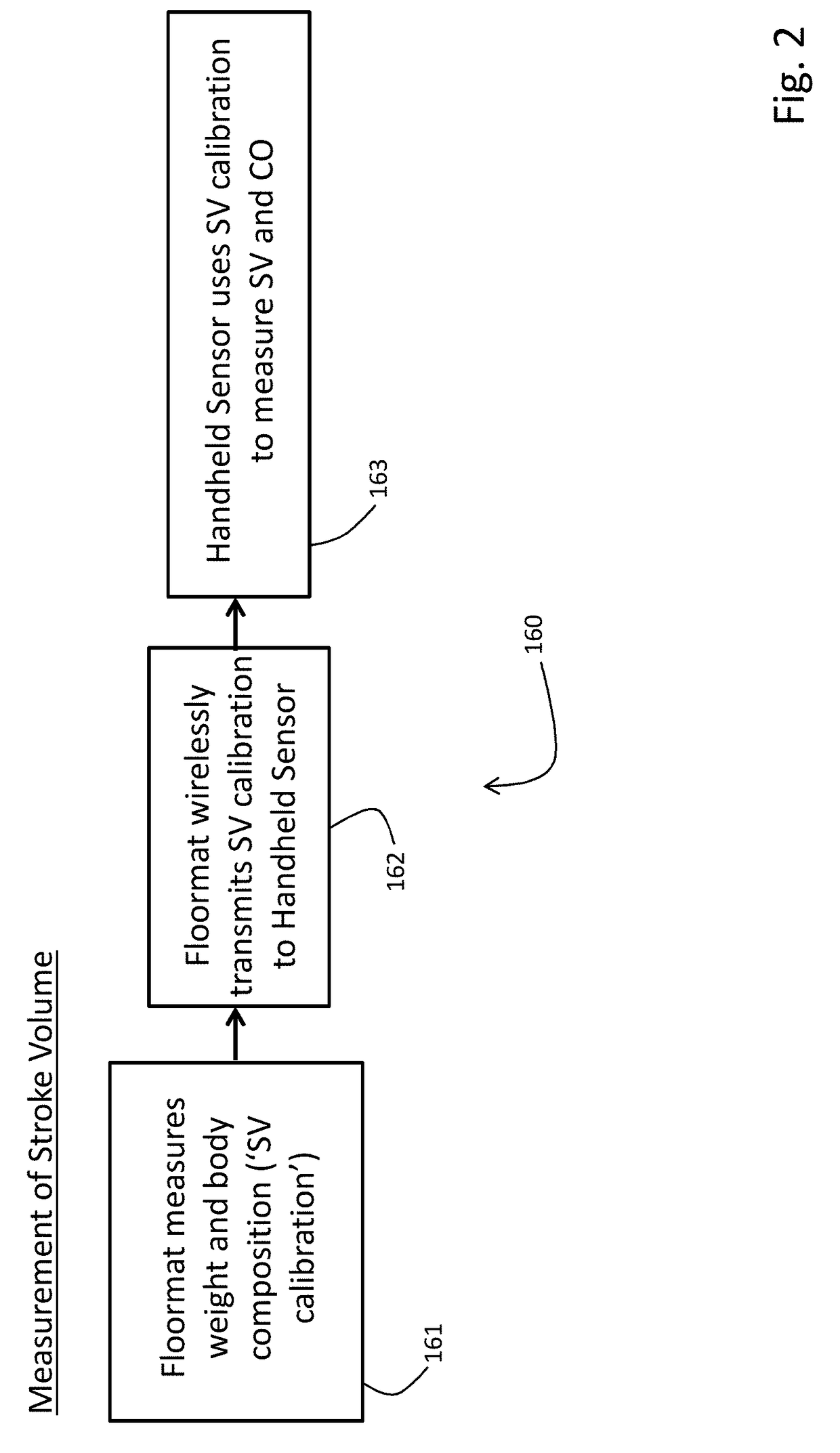Physiological monitoring system featuring floormat and handheld sensor
a monitoring system and sensor technology, applied in the field of sensors, can solve the problems of nullifying the value of such measurements, affecting treatment, and measurement errors, and achieve the effects of convenient measurement of a collection, simple form factor, and convenient us
- Summary
- Abstract
- Description
- Claims
- Application Information
AI Technical Summary
Benefits of technology
Problems solved by technology
Method used
Image
Examples
Embodiment Construction
1. System Overview
[0061]FIG. 1 shows a system 90 featuring a Floormat 100 and Handheld Sensor 150 working in concert to measure a user 125 according to the invention. Both the Floormat 100 and Handheld Sensor 150 feature a collection of physiological sensors, described in detail below, along with internal wireless devices that communicate with each other and an external mobile device 120. The goal of the system 90 is to quickly and non-invasively measure all five vital signs (HR, RR, SpO2, BP, and TEMP), hemodynamic parameters (SV, CO, TFC, Fluids), and biometric parameters (weight, body composition) with a collection of sensors that are easy-to-use, low-cost, inconspicuous, and seamlessly connect to the cloud. A rationale for the system 90 is that most disease states are predicted not by a single parameter (e.g. BP), but rather by a ‘constellation’ of parameters that may trend in different directions. However a complicating factor in monitoring such parameters is that they typicall...
PUM
 Login to View More
Login to View More Abstract
Description
Claims
Application Information
 Login to View More
Login to View More - R&D
- Intellectual Property
- Life Sciences
- Materials
- Tech Scout
- Unparalleled Data Quality
- Higher Quality Content
- 60% Fewer Hallucinations
Browse by: Latest US Patents, China's latest patents, Technical Efficacy Thesaurus, Application Domain, Technology Topic, Popular Technical Reports.
© 2025 PatSnap. All rights reserved.Legal|Privacy policy|Modern Slavery Act Transparency Statement|Sitemap|About US| Contact US: help@patsnap.com



